Blog
-

Pentagon journalists vacate workspace as new restrictions take effect
Members of a news media crew take down journalists’ workspaces after at least 30 news organisations declined to sign a new Pentagon access policy for journalists, at the Pentagon in Washington, DC, US, October… -
Asian Stocks Set to Track Wall Street Volatility: Markets Wrap – Bloomberg.com
- Asian Stocks Set to Track Wall Street Volatility: Markets Wrap Bloomberg.com
- Asian stocks slip in volatile trade Business Recorder
- Asia open: The good cop, bad cop, and the great market spin FXStreet
- Asia-Pacific markets rise, tracking Wall Street gains on strong bank earnings CNBC
- Escalating trade disputes trigger a pullback in the Asia-Pacific markets, while a mysterious account opens new short positions in the cryptocurrency market. 富途牛牛
Continue Reading
-
Press Briefing Transcript: Fiscal Monitor, Annual Meetings 2025 – International Monetary Fund
- Press Briefing Transcript: Fiscal Monitor, Annual Meetings 2025 International Monetary Fund
- Across the rich world, fiscal crises loom The Economist
- Ukraine’s debt is nearing 110% of GDP, while global debt is at its highest level since 1948. ubn.news
- IMF chief Georgieva says IMF will keep pushing G20 to prioritize debt issues Yahoo Finance
- Government Debt is a Global Problem Advisor Perspectives
Continue Reading
-

Twice-yearly lenacapavir could be an option for initial HIV treatment
Lenacapavir, a long-acting injectable administered once every six months, could be a component of combination regimens for people starting HIV treatment for the first time, according to final results from the CALIBRATE study. After 132 weeks of…
Continue Reading
-
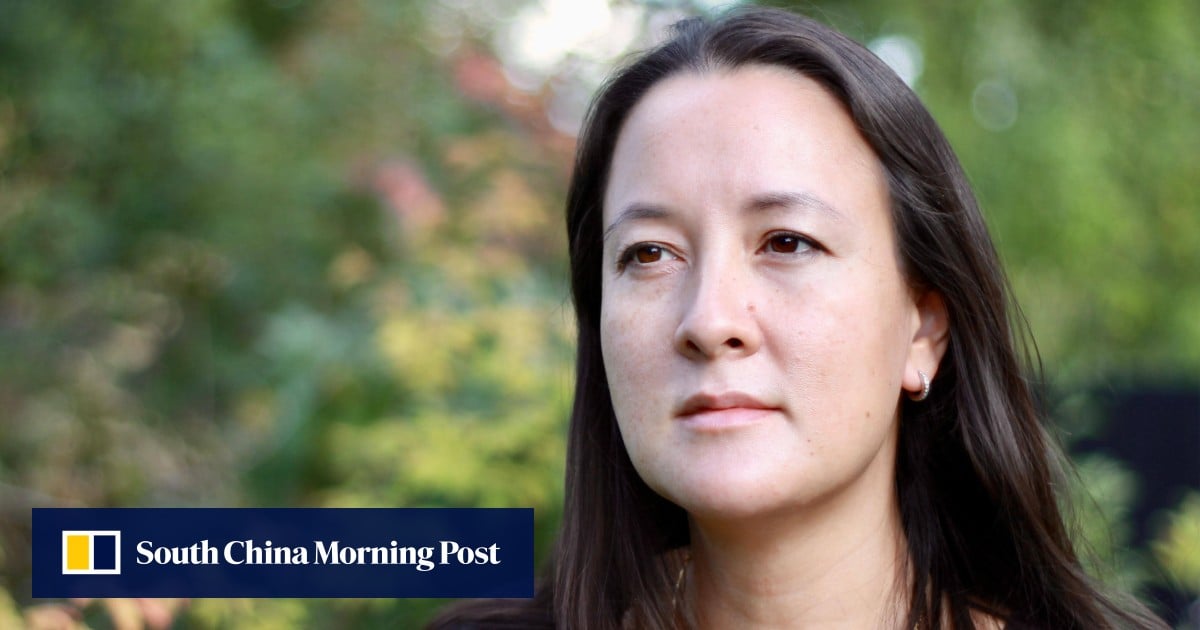
Hong Kong-born poet stunned into silence by detractors finds voice again with Foretokens
The Hong Kong-born poet Sarah Howe has a lovely voice. People have commented on it so often that she wrote a line about it in her new collection, Foretokens.
“From my teens, well-meaning adults would exclaim, ‘You have a lovely voice!’”…
Continue Reading
-

Ebola virus in Kasai revives 50-year-old questions on viral latency | The Transmission
The Lancet On Sept 4, 2025, DR Congo declared its 16th Ebola virus outbreak. The epicentre of this outbreak occurred in the Kasai province—the first resurgence in this region since 2008.1 Genomic analysis identified an Ebola virus with more…
Continue Reading
-
Just a moment…
Just a moment… This request seems a bit unusual, so we need to confirm that you’re human. Please press and hold the button until it turns completely green. Thank you for your cooperation!
Continue Reading
-
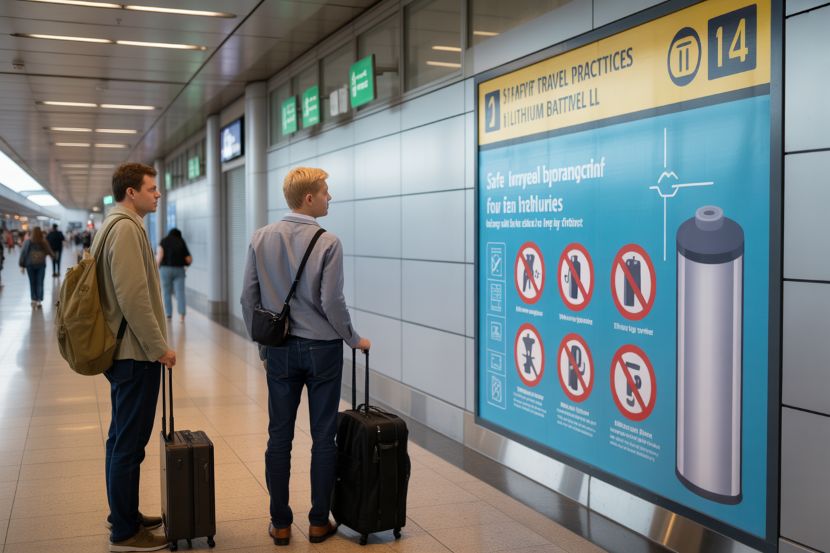
IATA Partners with Airlines for Safe Lithium Battery Transport in New Awareness Campaign
Published on
October 16, 2025The International Air Transport Association (IATA) has started an extensive global campaign to promote safe travel behaviour when travelling with lithium-powered devices. ‘Travel Smart with Lithium Batteries‘ aims to educate travellers about the safe handling of essential lithium-ion powered electronics such as mobile phones, laptops, cameras, and power banks – increasingly the norm in the travel experience.
With the increasing number of passengers carrying multiple electronic devices, IATA has identified the need for clearer communication regarding the safe packing and handling of lithium batteries. This safety campaign is an essential step in reducing the risks associated with battery-related incidents, such as fires or overheating, while improving awareness of existing airline policies.
Key Safety Rules and Guidelines
As part of the campaign, IATA has issued seven practical rules for safely carrying lithium-powered devices during air travel. The guidelines cover essential safety practices that all travelers should follow to minimise the risk of dangerous incidents.
The rules include packing only the necessary devices, ensuring all lithium-powered items are stored in hand luggage, and preventing short-circuiting of spare batteries by keeping them in their original packaging or covering the terminals with tape. Additionally, passengers are advised to report immediately to crew members if any device starts overheating, smokes, or appears damaged.
For larger batteries exceeding 100 watt-hours, such as those used in drones or certain cameras, passengers are encouraged to consult their airline before flying. The campaign also highlights the importance of following each airline’s specific policies, as local regulations may vary depending on the region or carrier.
Addressing Common Misconceptions
IATA’s campaign responds to frequent misconceptions about lithium battery safety. According to recent IATA data, a significant number of travelers misunderstand airline regulations for transporting lithium-powered devices. The findings revealed that while many passengers are familiar with the general rules, a large portion of them still believe they can pack small electronic devices in checked baggage. This misconception is especially common among travelers carrying power banks and other spare batteries, with 45% of respondents incorrectly thinking these can be packed in checked luggage.
The survey also found that 33% of passengers are unaware of the limits placed on battery power capacity. IATA’s efforts are focused on clearing up these misunderstandings and ensuring that travelers comply with safety standards, helping to reduce the risk of accidents involving lithium-powered devices during flights.
Industry-wide Collaboration and Safety Outreach
The campaign leverages IATA’s broad network, distributing safety materials that airlines, airports, and travel partners can freely use to educate their passengers. These include digital banners, social media templates, and in-flight safety materials, ensuring a consistent message across all platforms. The objective is to reach as many passengers as possible, reinforcing the importance of safe battery transport practices in the air travel industry.
By providing these resources, IATA encourages collaboration among airlines, airports, and regulators, fostering a unified approach to passenger safety. This joint effort is critical as the number of devices per passenger continues to increase, further highlighting the importance of educating travelers on safe packing and handling procedures.
Lithium Batteries: A Growing Safety Concern
Lithium batteries have become the power source for a variety of electronic devices, thanks to their efficiency and lightweight design. However, if damaged, improperly stored, or exposed to extreme conditions, these batteries can overheat, ignite, or cause fires. While these incidents are rare, their potential risk has led to more stringent regulations and guidelines to ensure passenger safety.
IATA’s Travel Smart with Lithium Batteries campaign reinforces the shared responsibility between travelers, airlines, and regulators in preventing battery-related accidents. This initiative is part of a broader global effort to standardise lithium battery transport rules, coordinated by the International Civil Aviation Organization (ICAO). IATA is working closely with aviation regulators and manufacturers to enhance safety standards and ensure compliance with evolving regulations on the safe handling of lithium batteries.
A Vital Step for Safer Air Travel
The Travel Smart with Lithium Batteries campaign represents an important move toward enhancing air travel safety as electronic devices continue to be a staple of modern life. By educating passengers about the simple, yet crucial rules for carrying lithium-powered items, IATA aims to significantly reduce the risk of safety incidents in the air. As the number of devices per passenger grows, this initiative is set to become a vital part of travel preparation, helping ensure that all air travel remains secure and incident-free.
By following these guidelines for safe travel, passengers can assure a seamless journey while helping innovation of aviation safety for all. The IATA campaign is a helpful reminder that with a little extra knowledge and attention to detail, lithium battery safety can become an effortless part of the overall travel experience.

Continue Reading
-
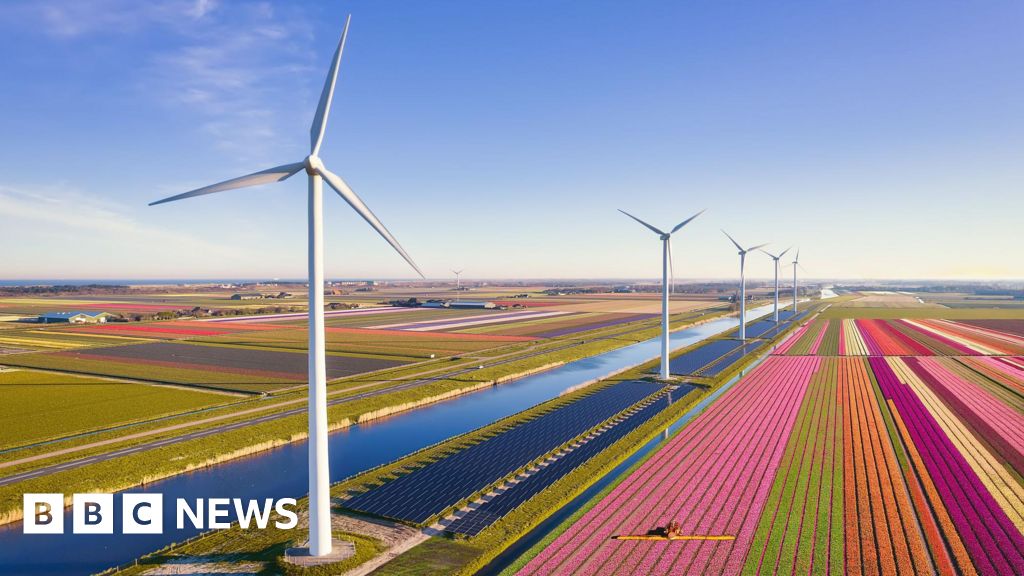
Netherland’s renewables drive putting pressure on its power grid
John LaurensonBusiness reporter, Rotterdam
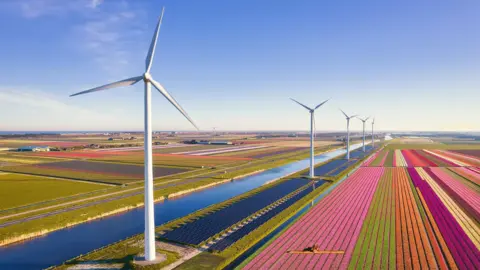 AFP via Getty Images
AFP via Getty ImagesThe Netherlands has raced to switch to wind and solar power In a Dutch government TV campaign called “Flip the Switch” an actress warns viewers about their electricity usage.
“When we all use electricity at the same time, our power grid gets overloaded,” she says. “This can cause malfunctions. So, use as little electricity as possible between four and nine.”
It is the sign that, in one of the most-advanced economies in the world, something has gone wrong with the country’s power supply.
The Netherlands has been an enthusiastic adopter of electric cars. It has the highest number of charging points per capita in Europe.
As for electricity production, the Netherlands has replaced gas from its large North Sea reserves with wind and solar.
So much so that it leads the way in Europe for the number of solar panels per person. In fact, more than one third of Dutch homes have solar panels fitted.
The country is also aiming for offshore wind farms to be its biggest source of energy by 2030.
This is all good in environmental terms, but it’s putting the Dutch national electricity grid under enormous stress, and in recent years there have been a number of power cuts.
The problem is “grid congestion”, says Kees-Jan Rameau, chief executive of Dutch energy producer and supplier Eneco, 70% of whose electricity generation is now solar and wind.
“Grid congestion is like a traffic jam on the power grid. It’s caused by either too much power demand in a certain area, or too much power supply put onto the grid, more than the grid can handle.”
He explains that the problem is that the grid “was designed in the days when we had just a few very large, mainly gas-fired power plants”.
“So we built a grid with very big power lines close to those power plants, and increasingly smaller power lines as you got more towards the households.
“Nowadays we’re switching to renewables, and that means there’s a lot of power being injected into the grid in the outskirts of the network where there are only relatively small power lines.”
And these small power lines are struggling to cope with all the electricity coming in from wind turbines and solar panels scattered around the country.
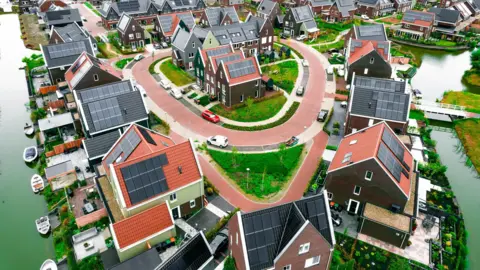 AFP via Getty Images
AFP via Getty ImagesMore than one in three Dutch homes has solar panels Damien Ernst, professor of electrical engineering at Belgium’s Liege University, is one of Europe’s leading experts on electricity grids. He says it is an expensive problem for the Netherlands to solve.
“They have a grid crisis because they haven’t invested enough in their distribution networks, in their transmission networks, so they are facing bottlenecks everywhere, and it will take years and billions of dollars to solve this.”
Prof Ernst adds that it is a Europe-wide issue. “We have an enormous amount of solar panels being installed, and they are installed at a rate that is much, much too high for the grid to be able to accommodate.”
At Eneco’s headquarters in Rotterdam, Mr Kees-Jan Rameau highlights a large control panel that the company calls its “virtual power plant” and “the brain of our operations”. It is used to help balance the grid, avoiding blackouts.
When electricity generation is too high across the Netherlands, it enables Eneco to turn wind turbines out of the wind and turn off solar panels.
As for when demand for electricity is too high, it lowers the power to customers who have accepted to allow Eneco to stop or reduce their electricity supply when the network is under strain in exchange for lower prices.
But for homes and companies who want to scale-up their use of electricity with a new or larger grid connection, that, increasingly, is just not possible.
“Often consumers want to install a heat pump, or charge their electric vehicle at home, but that requires a much bigger power connection, and increasingly they just cannot get it,” says Mr Kees-Jan Rameau.
He adds that it is worse for businesses. “Often they want to expand their operations, and they just cannot get extra capacity from the grid operators.
And it has got to the point where even new housing construction in the Netherlands is becoming increasingly difficult, because there’s just no capacity to connect those new neighbourhoods to the grid.”
Those people, and companies, end up on waiting lists for a number of years. At the same time there are also waiting lists for those who want to supply the grid with power, such as a new home fitted with solar panels on its roof.
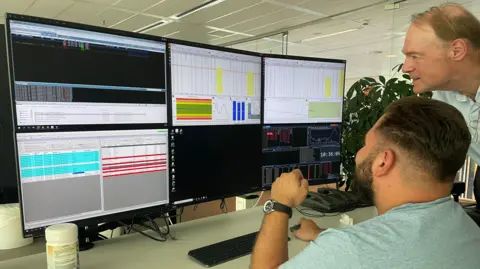
Energy firm Eneco can remotely reduce the amount of electricity generated by its wind farms Tennet, the government-owned agency that runs the Netherlands’ national grid, says that 8,000 companies are currently waiting to be able to feed in electricity, while 12,000 others are waiting for permission to use more power.
Some sectors of the Dutch economy are warning that it is hampering their growth. “Grid congestion is putting the future of the Dutch chemical industry at risk… while in other countries it will be easier to invest,” says the President of the Dutch Chemical Association Nienke Homan.
So, was all this avoidable? “In hindsight I think almost every problem is avoidable,” says Mr Kees-Jan Rameau.
He adds that following the 2015 Paris Agreement on trying to tackle climate change, “we were very much focussing on increasing the renewable power generation side. But we kind of underestimated the impact it would have on the power grid.”
Tennet is now planning to spend €200bn ($235bn; £174bn) on reinforcing the grid, including laying some 100,000km (62,000 miles) of new cables between now and 2050.
That’s a huge amount of money, but there is also a big cost to not spending it. Grid congestion is costing the Dutch economy up to €35bn a year, according to a 2024 report from management consultancy group Boston Consulting Group.
Eugene Beijings, who is in charge of grid congestion with Tennet, says that patience is sadly required. “To strengthen and reinforce the grid, we need to double, triple, sometimes increase tenfold the capacity of the existing grid.
“And it’s taking on average about 10 years to do a project like that before it goes live, of which the first eight are legislation and getting the rights to put cables in the ground with all property owners. And only the last two years are the construction period.
“And meanwhile the energy transition is going that fast that we cannot cope with it, with the existing grid. So every additional request [to connect] is adding to the waiting list.”
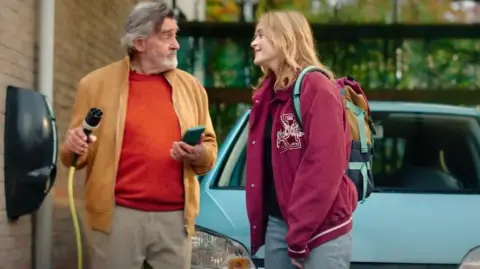 Zet ook de knop om
Zet ook de knop omThe Dutch government has paid for adverts encouraging people not to charge their cars during peak hours At the Dutch energy ministry, which is actually called the Ministry for Climate Policy and Green Growth, the Minister Sophie Hermans wasn’t available for an interview. But her office gave a statement:
“In hindsight, the speed at which our electricity consumption has grown might have been collectively underestimated in the past by all parties involved. It is also hard to predict where the growth will occur first, as this results from individual companies/sectors and households.”
As for solutions, the ministry says it has a “National Grid Congestion Action Plan” focussed on adjusting legislation so grid expansion permits can be granted more quickly.
It is encouraging people to make better use of the existing grid with, for example, its Flip the Switch campaign.
And the financial incentive for people who feed their surplus solar electricity into the grid is being reduced to almost nothing. In some cases, people will even have to pay to feed solar power into the grid.
Read more global business storiesContinue Reading
-
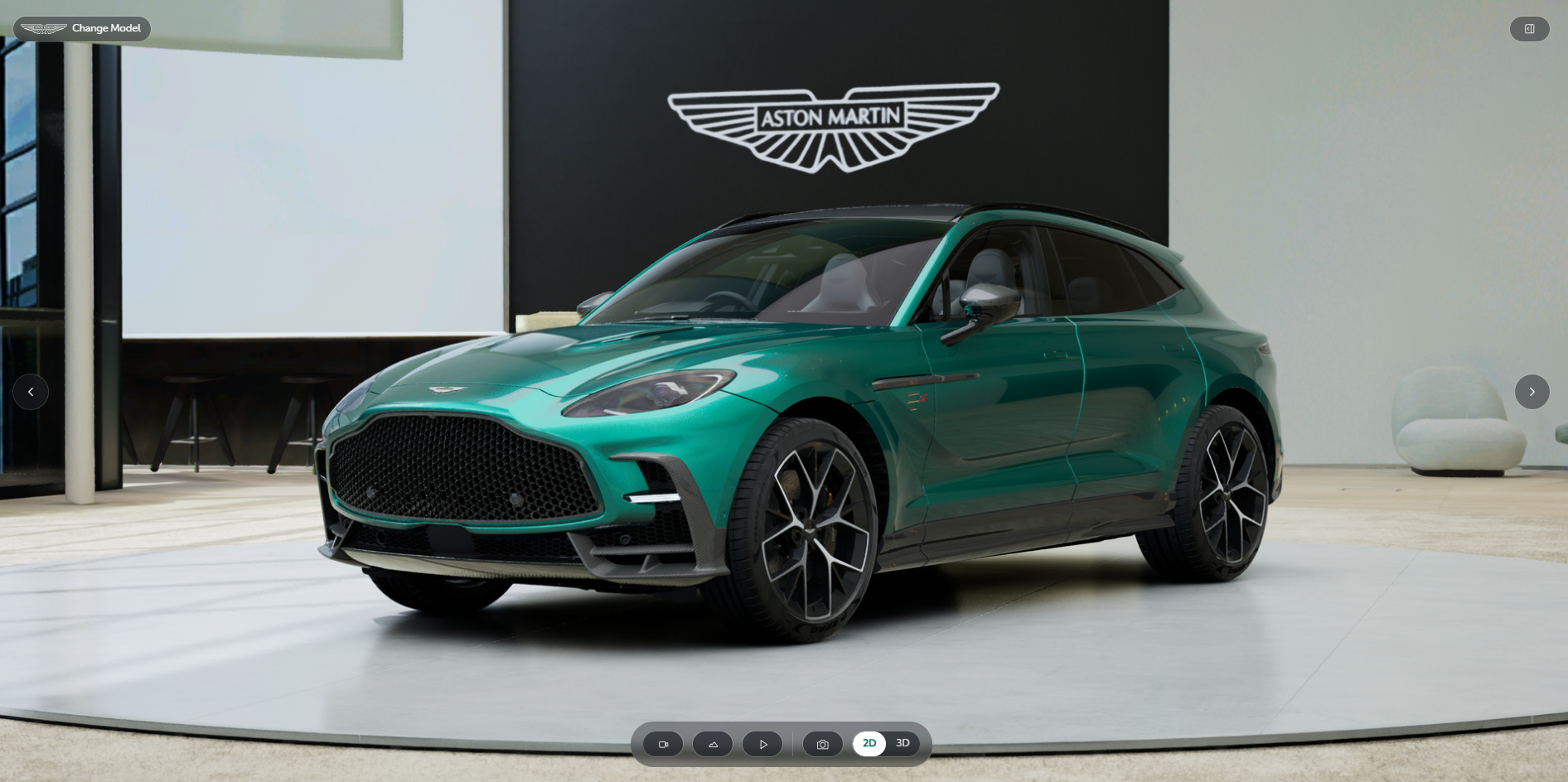
Aston Martin unveils new configurator that sets the standard for automotive digital products –
- Aston Martin announces a comprehensive update to its online configurator
- Lustrous paint finishes and new environments provide the perfect showcase for Aston Martin’s ultra-luxury design
- New graphics and navigation bring Aston…
Continue Reading
